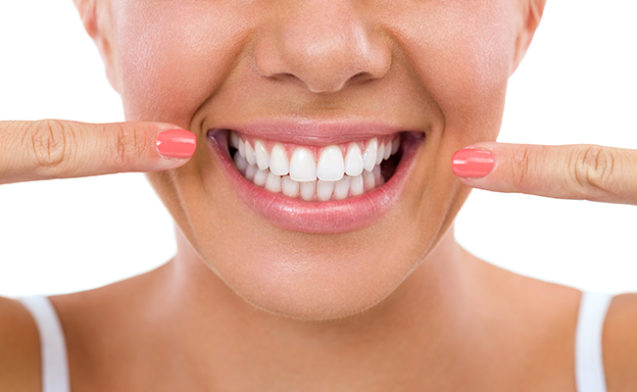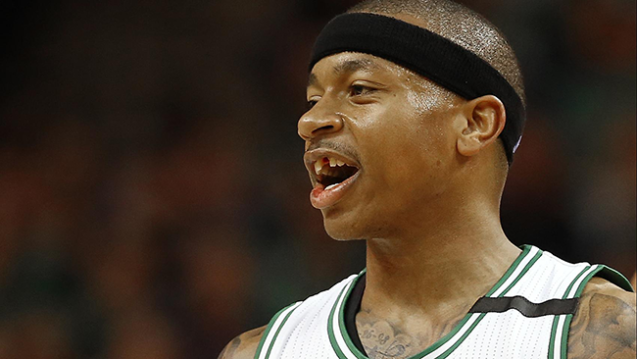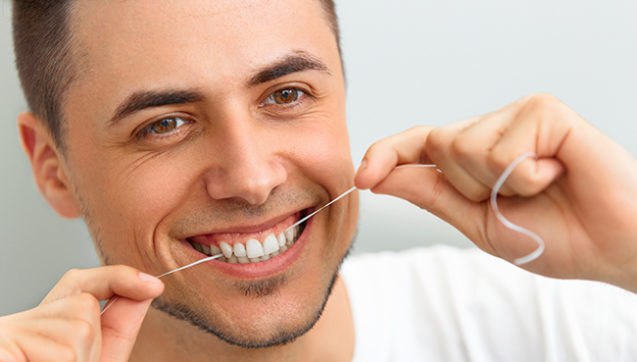By this point, it’s pretty clear that people want white teeth. As a country, we spend $1.4 billion on consumer teeth whitening products, and the teeth whitening industry generates over $11 billion a year in revenue. We’re not complaining that people are willing to pay to have white teeth, but it does beg the question—what’s staining our teeth in the first place?
Foods and drinks cause staining in a couple ways. Foods that are high in acid tend to strip away enamel, which exposes the more vulnerable dentin to staining. Many foods—typically ones with natural bright or rich colors—contain chromogens, substances that adhere to tooth enamel and stain it.
- Coffee and Tea: Whether you drink coffee or tea to give yourself a quick pick-up, you’re staining your teeth. The acids in these drinks can strip enamel off your teeth—and leave dark stains behind as well.
- Wine: Most people think of red wine as a culprit for staining, and it is. It’s acidic and contains stain-causing chromogens. However, most people don’t realize that white wine stains teeth—it’s much more acidic, so it strips tooth enamel and leaves them vulnerable to staining from anything else you’re eating at the time.
- Rich Sauces: Sauces that have a rich color—think tomato sauces and curries—combine both acidity and stain-causing pigments that can darken tooth dentin.
- Food Coloring: It’s not difficult to imagine why foods high in food coloring stain teeth. After all, they have added chemicals whose sole purpose is to turn the food a bright color! Popsicles and hard candies are big culprits here.
- Sugary Drinks: Sports drinks, energy drinks, and soda all contain acids and high amounts of sugar that are damaging to your teeth. They can leave your teeth vulnerable to stains from any food coloring in the drink—and cause cavities as well.
- Balsamic Vinegar: All vinegars are acidic, but balsamic vinegar combines the acidity with darker coloring that can stain dentin.
- Berries: Cranberries, blueberries, and cherries all contain lots of chromogens and can stain your teeth. In general, if a food (or drink) will leave a stain that is tough to remove from fabric, chances are it will stain your teeth as well.
We’re not recommending that you cut all these foods and drinks out of your diet. It’s just not practical. However, if you want to keep your teeth whiter for longer stretches of time, there are some tips you can use:
- Avoid sugary drinks and highly processed sugary treats. They tend to cause tooth decay as well as stains.
- Drink through a straw. If you’re going to have a sugary or acidic drink, using a straw can largely bring the drink past your teeth, reducing the risk of stains.
- Brush your teeth, rinse your mouth, or even chew sugar-free gum after eating or drinking these trouble foods. It helps remove the stain-causing compounds from your mouth.
You can always use consumer whitening products to reduce stains on your teeth, and in fact, we’ve blogged about them recently! However, if you really want to whiten your teeth as much as possible, we’d love to talk to you and explain the results you can achieve with professional whitening.
To learn more about how to reduce the risk of stains or to schedule an appointment, call your Lancaster, CA dentist at 661.952.7865 today!
More
Do you ever stand in the oral care section at a store—maybe your local supermarket, maybe a general retailer or a pharmacy—and wonder why there are so many different types of toothpaste? Think about how many brands there are—and then how many different types of toothpaste there are for each brand! Crest 3DWhite, Pro-Health, Pro-Health Advanced, with Scope, Sensi, regular old Crest, Kids’ Crest… the list goes on and on.
A helpful way to think about your toothpaste choice is to think about your goals, beyond basic hygiene, when you brush. Do you want fresh breath or whiter teeth? Do your teeth hurt when you brush? Do you want to avoid a long cleaning next time you’re at the dentist? When you answer those questions, you’ll start to narrow down that overwhelming selection of toothpastes to a more manageable few.
There are a few basic types of toothpastes out there today. However, it’s important to realize that many toothpastes fit into one or more of the categories. (This is why there are more than 40 different types of Crest alone, after all.)
Fluoride Toothpaste
Fluoride toothpastes contain fluoride compounds to help prevent tooth decay. Fluoride works by strengthening, and even helping repair, tooth enamel. These toothpastes vary in the amount and type of fluoride compounds they contain and can come in a variety of flavors that appeal to both adults and children.
Whitening Toothpaste
If you’d like your teeth to look a little whiter, whitening toothpastes can help. They’re not as effective as dedicated whitening products (like whitening strips), but they can help you maintain whitened teeth. However, keep in mind that many whitening toothpastes can be more abrasive than regular toothpastes. If you use them, give your teeth an occasional break by using less abrasive toothpastes as well!
Desensitizing Toothpaste
Some people experience pain when their teeth are exposed to cold, heat, or touch—even the gentle pressure applied when brushing their teeth. If you experience this condition, called dentin hypersensitivity, you can use desensitizing toothpaste to make brushing a more pleasant (or at least not painful) activity.
Anti-plaque Toothpaste
Anti-plaque toothpastes help prevent plaque from accumulating around your teeth, reducing the risk of both tooth decay and gum disease. There are a variety of anti-plaque compounds out there, including Triclosan (an anti-bacterial compound) and zinc citrate (which supports your immune system).
Kids’ Toothpaste
Toothpastes for kids may or may not have fluoride in them—and that’s actually not a problem. First of all, the physical action of brushing (and flossing) loosens plaque and helps protect your teeth. Typically, toothpastes made for children have fruity flavors and lower levels of fluoride in case of swallowing.
To be honest, the most important choice you make is to brush and floss regularly. The best toothpaste for you to use is one that supports your goals for oral health, and that you will use twice a day, every day.
Of course, if you’d like to find out more about toothpaste, or want specific recommendations, we’re happy to help. Call your Lancaster, CA dentist at 661.952.7865 today!
More
We all have our vices. Things like a couple of glasses of red wine with dinner, that cup of joe (or three) to start your day, and smoking all take a toll on the color of your teeth. Whether you are getting ready for your wedding day, aren’t ready to give up on the things you enjoy partaking in, or would just like boost in your smile, there are many reasons to have your teeth whitened. With so many options available today, how do you know which is best for you? The types of product you need will depend on your budget and how much whitening you are looking to do. Read on to see how you can get your pearly whites back to being pearly… and white.
Basic Teeth Whitening Products
There are many dental products out there that claim to be able to whiten teeth. These include gum, toothpaste, and mouthwash. While these products promote themselves as whitening teeth, they’re typically not very effective.
The American Dental Association states that there two kinds of stains whitening products target. For surface, or extrinsic, stains, these products may be able to help. For deeper, or intrinsic, stains, these products don’t have enough whitening agent, and your teeth aren’t exposed to the agents long enough, to remove deeper stains. These products may not be able to whiten your teeth to where you want them, but they can be useful in maintaining a bright smile after using something a little stronger.
Whitening Strips
Whitening strips are an over-the-counter product that works better at whitening your teeth. They typically come with two strips in a container, one each for your top and bottom teeth. With these strips, you’ll normally leave them on for 20-30 minutes per session, allowing the whitening agent more time to do its work. Whitening strips can be used multiple days in a row, but also can cause tooth sensitivity. While this sensitivity isn’t a long-term problem, you should take a few days off of using the strips if your teeth become too sensitive.
Take Home Kits
Take-home whitening kits are a treatment you need to see your dentist for. Your dentist will make an impression of your teeth to create a tray to put the bleaching agent into. Once you have the trays (usually within one to two weeks of having impressions taken), your dentist will give you instructions on how to use your kit.
In-Office Treatment
This treatment is by far the most effective way to get your teeth whiter. Compared to the other teeth whitening products, chairside bleaching has the most potent bleaching agent, usually requiring a one-time dental visit for one to two hours. Your dentist will make sure you are a candidate for in-office bleaching and will take the proper precautions to ensure that the bleaching agent will avoid your gums, as it can irritate the tissue.
Typically, the more effective a whitening product is, the more expensive its price. Depending on your situation, one treatment may be ideal for you, even if it’s not ideal for another patient. Often, in-office whitening treatment may be initially expensive, but in the long run, you get the color you were aiming for, and potentially save money by not trying several cheaper products that don’t deliver results.
If you are unsure what option is best for you, give us a call at (661) 952-7865 for more insight.
More
Sports build camaraderie. They’re fun, adding some excitement to an otherwise mundane week, and they’re always a great source for exercise. But of course, all good things have to have some kind of drawback, right? If you thought this, you’d be correct. And with sports, you have to balance your fun with the risk of injury—and that includes mouth injuries.
As the NBA Finals start up, you don’t have to think too far back for a dramatic example. During the playoffs, Boston Celtics point guard Isaiah Thomas was going for the ball when an opposing player hit him in the mouth with his elbow. He was not wearing a mouthguard, so needless to say, Isaiah lost his front tooth and needed hours of oral surgery to repair the damage.
We can’t say for certain what would have happened if Isaiah were wearing a mouthguard, in many cases, basic safety precautions can prevent, or lessen the impact, of incidents like this one. The American Dental Association reports that athletes are 60 times more likely to suffer mouth injury when not wearing a mouthguard. That’s a lot of trips to the dentist saved by wearing a mouthguard!
So if you want to enjoy sports and make sure you don’t end up with a missing or chipped tooth, here’s some advice. If you play in a contact sport, or if there is any chance for a body part or object to hit your mouth, wear a mouthguard.
There are three types of mouthguards: Stock, boil and bite, and custom fitted.
Stock Mouthguard
The cheapest of the mouthguards, these offer some protection, but not as much as the others. Since they’re “one size fits all,” these mouthguards can often be uncomfortable.
Boil and Bite Mouthguard
Similar to stock mouthguards, you can buy these at sporting goods stores or places like Walmart. To get a better fit, you boil these mouthguards to soften the plastic. When the temperature of the mouthguard is safe, you place it in your mouth and bite down, allowing the mouthguard to shape to your mouth. A better-formed mouthguard provides more protection and makes for a comfortable fit as well.
Custom Mouthguard
Your dentist can create a mold of your teeth to create a mouthguard made specifically for your mouth. These mouthguards provide the best protection, and are the most comfortable; many people will forget they are even wearing them.
The bottom line is this: if you don’t wear your mouthguard, then it’s not protecting your teeth.
There are multiple reasons why people don’t wear their mouthguards. A lot of store-bought mouthguards make it hard to breathe, talk, and drink, or just aren’t comfortable. In many cases, coaches (and parents) don’t enforce the wearing of mouthguards.
If you’re going to play sports, and you want to protect your teeth, you need to wear a mouthguard. While a custom mouthguard may cost more money, their wearability means people are more likely to use them. And compared to the pain, time, and cost of surgery for fixing a mouth injury, even the most expensive custom mouthguard is inexpensive.
If you have more questions about mouthguards and how they can prevent mouth injuries, call your Lancaster, CA dentist at 661.952.7865 for an appointment today!
More
Imagine you’re standing in the dental products aisle at your local Target or Walmart. You’re about to run out of floss at home, and you just want to pick some up. If you’re like most people, your first thought is probably something like this:
Why in the world are there so many types of dental floss?
Unfortunately, this can make it hard to know which product is the best. Being a dental practice, we have to tell you the truth: it doesn’t really matter a whole lot what type of floss you prefer, as long as you are actually flossing. However, that doesn’t really help you when you’re standing in the store, trying to decide between dozens of different types of dental floss.
In this series of blog posts, we’ll inform you about different types of dental products, so you can choose which dental product is right for you, starting with floss. With floss, it’s important to know that there a few different types of floss on the market. Choosing the one that’s right for you can make flossing pain-free and more effective.
Woven
There are two types of woven floss you may hear about. The first type of woven floss is generally made of cotton. With these flosses, you can clearly see the wrapped threads, especially since they are often different colors. Cotton woven floss can be very effective in cleaning plaque, and because of the material it’s made of, can also be gentler on your gums. The second type of woven floss consists of nylon filaments threaded together to form a single, larger thread.
In general, woven flosses are effective, but depending on the space between your teeth, the threads can come apart.
Monofilament
Monofilament floss is usually made of Teflon, and is a single thread. This means it is very durable and unable to fray like multifilament woven floss. Since Teflon has a slippery consistency, it is often much easier and more comfortable to fit between your teeth.
Waxed or unwaxed?
Wax helps the floss fit between your teeth more easily. Unwaxed floss squeaks, which is a benefit, because it tells you that it’s clean between your teeth. If you haven’t got a preference, try using both waxed and unwaxed floss to see which one works better and feels more comfortable for you.
Dental Tape
Dental tape is wider than the flosses described above. This is helpful if you have a wider gap in your teeth or dental fixtures like crowns, bridges, etc. If you have a hard time getting the dental tape in between your gums, consider changing to filament floss.
Floss Threaders
If you have braces, bridges, or permanent retainers, floss threaders are a must. Floss threaders have a rigid piece of string followed by a loop. You put your floss of choice in the loop, and guide the floss past your braces, bridges, or retainer. Then you can floss with the attached dental floss. This can take more time, but when braces or other fixtures are involved, flossing is even more vital in keeping your mouth healthy.
If you’ve read this far, you should know that there isn’t a “best” floss out there, only what works with each person’s needs and preferences. If you are unsure of what floss to use, ask your dental hygienist or dentist for advice on what may work best for you.
More





